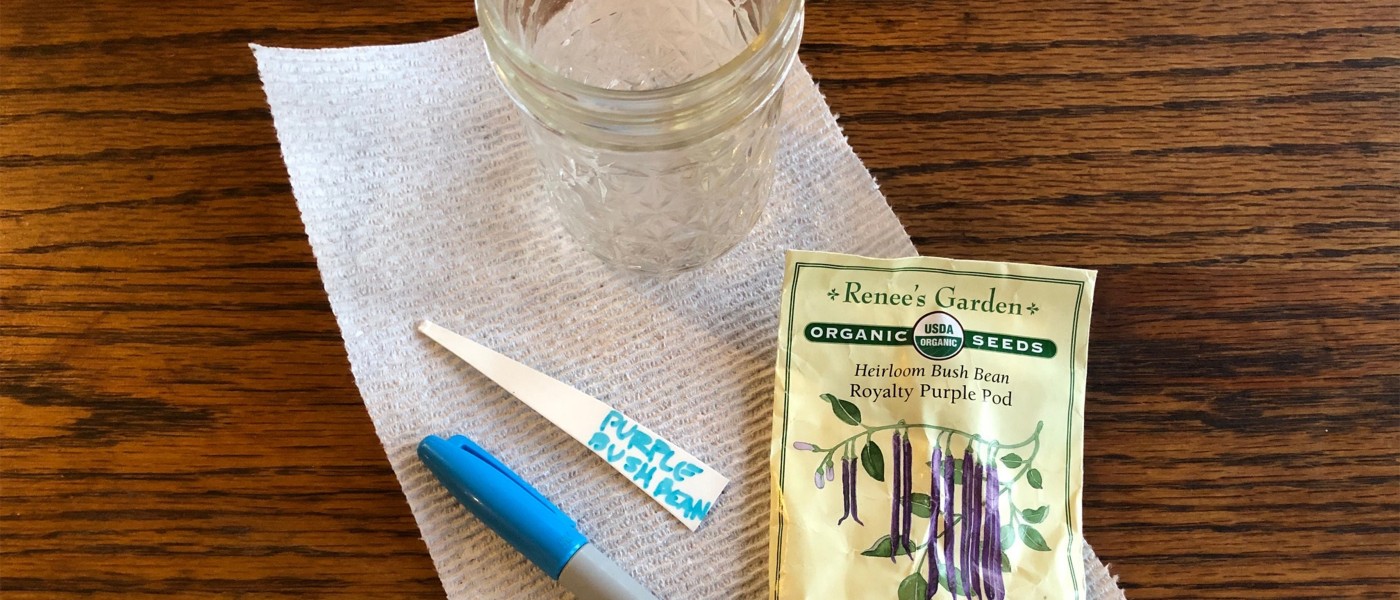Starting seeds indoors can be a calming respite from uncertainty. As sure as one season unfolds into the next, seeds are part of the plant life cycle and hold the promise of renewal. Fresh seeds from this year are ideal, but if you have lettuce seeds from 2019 or tomato seeds from 2015, they very well might be viable.
Normally, purchasing fresh seeds every year is the most reliable way to insure good quality germination and growth, and you can still do so online (see below for recommended sources). But high demand and current safety protocols have added a week to 10 days to many online seed orders.
If you want to get started right away, you may be able to use any seeds you have leftover from years gone by. Depending on the type of seed , their age, and storage conditions, seeds can last from one to 10 years, sometimes much longer. To find out if the seeds are still viable, I recommend doing a germination test. It’s easy, enjoyable, and reminiscent of a school science project. It’s also a nice way to bring some nature indoors.
You’ll need: seeds, paper towel, a cup or jar, a measuring cup of water, pencil or pen, and rubber band (optional).
Cut or tear the paper towel in half so you have two long, narrow strips. With the short ends to the sides and the long ends top and bottom, fold the towel in thirds, first the bottom up, then the top down. Then open up the towel.
Evenly space 10 seeds along the middle of the paper towel. Then fold up the bottom of the towel to cover the seeds, and then fold the top down. From right to left, roll up the towel and place in a cup or jar. Tilt the cup slightly and add about an inch of water so that it will moisten the seed filled paper towel. Mark the jar with the kind of seed and the date or use a rubber band to attach the seed packet to the jar.
After an hour, carefully pour off the excess water and move to a slightly warm place like the top of a refrigerator or a countertop. (Leave large seeds like beans or corn in water for a few hours or overnight since they need more hydration. But make sure not to leave in water more than 24 hours or they will start to decompose.) Keep the “test jar” slightly moist, spritz or add a few drops of water when needed. It should not be sopping or dried out. After a few days observe or unroll the towel to see if anything is sprouting. Check the seed packet for “days to emerge” or “germination” information.
Most seeds will germinate in 3 days to 3 weeks. Keep checking every few days. If all of your seeds sprout, congratulations, you have 100 percent germination. If only half sprout, congratulations again, you have 50 percent germination, so consider doubling the amount that you plant. Use the success or failure of the test to determine how thickly to plant your seeds. After any successful germination test, consider safely sharing seeds with others.
Happy sprouting and happy growing!
Online Seed Sources
Stay at home and purchase seeds online. These companies are sources of reliable, exciting, and heirloom varieties, though you should expect to wait longer than usual for your order. Consider asking family or friends to safely share with you. Most seed packets contain more than enough seeds for a typical home gardener.



